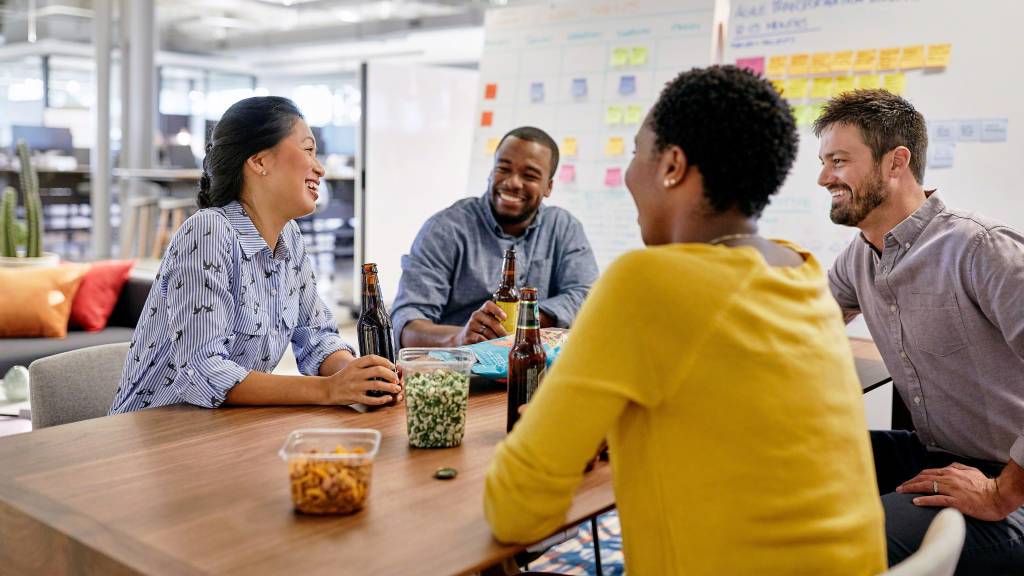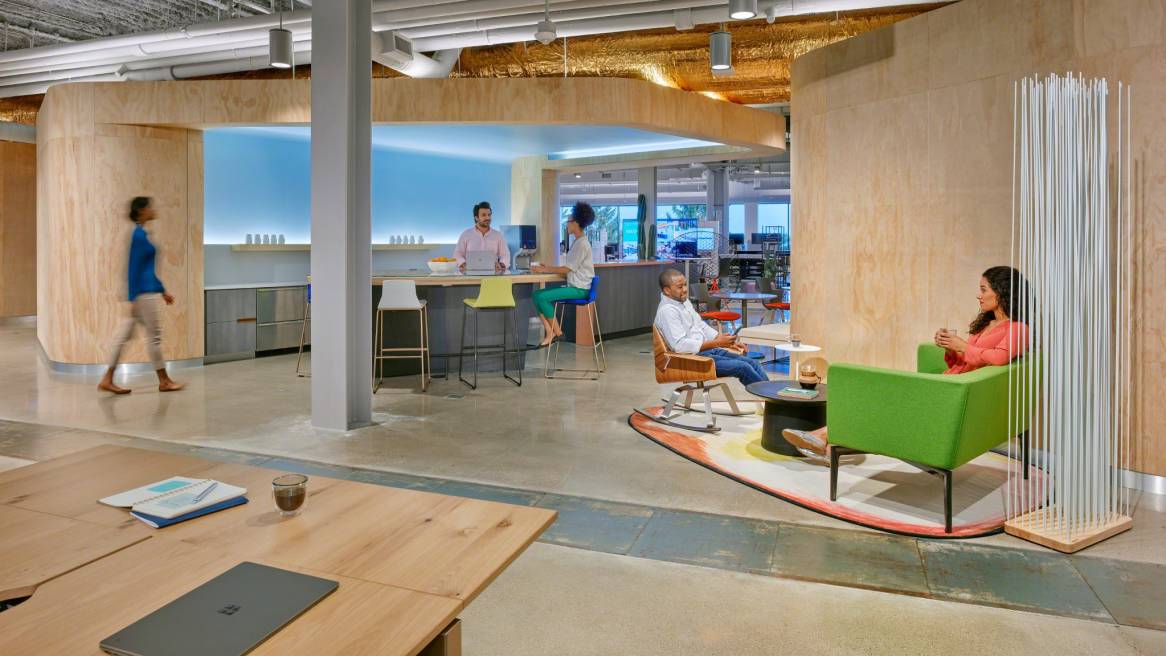Transforming IT at Steelcase: An Agile Case Study
Change Management
“IT could not have adopted agile just by moving into a new space. User prototyping and consulting in the creation of space is the reason it succeeded.”
Dr. Tracy BrowerPrincipal, Applied Research + Consulting
The Steelcase Applied Research + Consulting team helped IT focus both strategically and tactically on managing the culture change required in a shift to agile work. The support intended to catalyze new behaviors and reflect IT’s guiding principles by creating user-centered experiences around change management.
Many of the activities were based on peer-to-peer activities which helped build community and trust, and encouraged new behaviors within a changing landscape of work. Change Champions were selected from each IT area to learn about agile culture and practices, and help with overall team adoption and behavior changes.
The approach to culture change used a variety of tactics to complement and build upon one another. A strategic approach looked at change management tactics through three different lenses including how people relate to each other, how they relate to their use of space and how they exchange information.

Relating to Each Other
- Team ritual workshops engaged teams in developing intentional ways to connect.
- Meet your neighbor “speed dating” encouraged community.
- “Making connections” lunches nurtured relationships.
- Video interviews and peer-to-peer sharing of experiences built trust.
- Neighborhood Association planned fun, social, learning events and socialized floor protocol.
Relating to Space
- Photo journal sharing and cardboard spatial prototypes empowered teams to change their space and share with peers as changes happened.
- Change Champion workshops had peers who first moved into the space introduce their colleagues to the new space.
- Creating an engaging and fun move-in experience complete with a masseuse and dog-day-at-work supported a more informal, comfortable atmosphere.
- Hosting customers from inside and outside Steelcase created a sense of pride.
- United Way events during move-in connected people to a social purpose.

Exchanging Information
- CIO staff meetings and open forums kept people informed.
- Intranet site provided access to leader messages and employee blogs, photos and videos.
- Communication helped ensure consistency from team-to-team and leader-to-leader.
- Creating an agile Community of Practice invited voices from around the organization to learn and share as the project developed.
- A specific measurement plan mapped how the space and the experience would be studied and improved.
NEXT CHAPTER – Key Insights
PREVIOUS CHAPTER – Leadership + Communication


